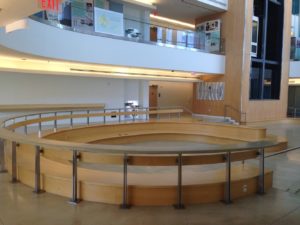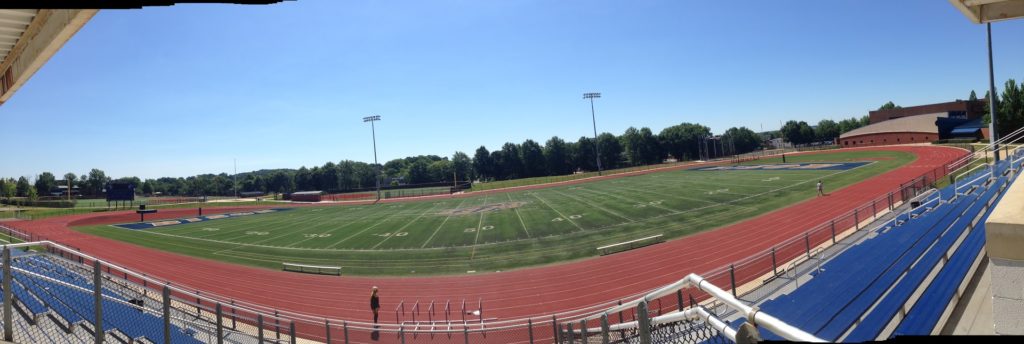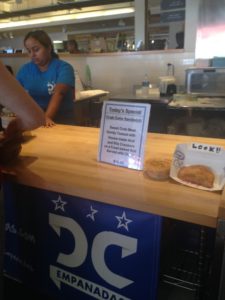“Deaf people inhabit a rich sensory world where vision and touch are a primary means of spatial awareness and orientation. Many use sign language, a visual-kinetic mode of communication and maintain a strong cultural identity built around these sensibilities and shared life experiences. Our built environment, largely constructed by and for hearing individuals, presents a variety of surprising challenges to which deaf people have responded with a particular way of altering their surroundings to fit their unique ways-of-being. This approach is often referred to as DeafSpace.”
One of the great things about studying and living at Gallaudet is having the ability to experience DeafSpace. What is DeafSpace like?
Several newer buildings on campus are built as DeafSpaces. These buildings generally have open spaces, automatic doors, proper lighting, and wall colors without patterns that are pleasing to the eye. This is one  of the buildings designed as a DeafSpace. I had the pleasure of attending a couple of ice cream socials organized for summer ASL students here. It was interesting to watch how easily the space could be used for “speeches” because it was so open. There is also an elevated platform across from the bench which could act as a make-shift stage.
of the buildings designed as a DeafSpace. I had the pleasure of attending a couple of ice cream socials organized for summer ASL students here. It was interesting to watch how easily the space could be used for “speeches” because it was so open. There is also an elevated platform across from the bench which could act as a make-shift stage.
Several older buildings on campus have since been renovated to be more Deaf friendly. In one of the buildings, a courtyard was created so people could congregate in the middle of the building and so people could see one another even if they were on a different level.
Almost all classrooms had off-white or light blue walls. Doors often have glass panels on them such that one is able look into or outside of the classroom easily. One day, my teacher was signing with another teacher who was just outside the classroom, through the glass door. They had no need to open the door since they could see each other! There are, of course, downsides to having glass doors – sometimes, one might prefer some privacy. As such, there are blinds that people can use as and when they see fit.
Now here’s a fun fact for ND football fans. Did you know that the football huddle was pioneered by Gallaudet’s football team? They had to huddle together so the other team wouldn’t be able to see their signs! The football field is not DeafSpace per se, but the huddle gives us a sense of what cultural DeafSpace is like. It was an ingenious solution that even the hearing could use.
It’s important to realize that making a space Deaf friendly doesn’t necessarily have to entail costly architectural changes. Union market which is just across the street from Gallaudet is a warehouse turned farmers market/ haven for foodies (I ate there a lot!) What I especially loved about Union market was how many restaurant owners have made their stalls Deaf friendly.
DC Empanadas is one such stall. First, they visually show and describe what their food is like, making it easy for the Deaf to know what’s being sold (though this is helpful, even for the hearing!) Second, they have servers who can take orders in ASL! How does this work? The guy at the counter signs HELLO in ASL to everyone who steps up to the counter. If the person signs back, he continues taking the order in sign. If the person begins speaking to him, he uses his voice. This is one farmers market I’d recommend any one in DC to check out at least once. Oh, and did I already mention that the food is amazing?

